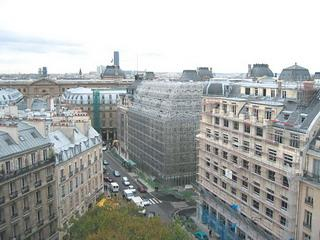Ministry of Culture and Communication - Ilôt des Bons Enfants
Until very recently, the Ministry of Culture and its departments those structures were scattered around Paris on many different sites. Today, we find them grouped here in a single space, a place where the monumentality of the 1920s, the rationality of the 1960s and the excess of the 1980s all coexisted.
The architects chose to maintain the coexistence of the different strata, an intersection of regulatory, social and aesthetic values, with sensations and actions that reflected more a process of trial and error than intention and consensus.
Adding, transforming, shifting materials and functions, was perhaps a way of remaining faithful to a normal evolutionary process and to the Ministry of Culture s pluralistic role. The site needed to be woven together and to remain in movement. The process of veiling and unveiling that was imagined prompted a dynamic exploration of the space, located precisely at the juncture of that space s relation with the past and its relation with the future.
Rue des Bons Enfants was narrow and dark. However, aligned on the other side of the pavement were fine 17th century buildings made of timeworn stone. A breachwas created by demolishing a minor building and the sun once again shone on a newly invented garden.
On the periphery, at right angles to the three streets of Saint Honoré, Montesquieu and Croix des Petits Champs, which together constitute the full porous carapace of the Bons Enfants block, all the operation s urban and perimetric walls are enveloped in laser-cut stainless steel lattice. It is light and ubiquitous, never cumbersome. And the way we perceive it is transferred to visible and often contrasting values bright and dull, finesse and depth, sharp and blurred, figurative and abstract. It is body-guard and confidential structure. It is cuirass, armour or chainmail, seeking to protect the ministry from any untimely intrusion.









